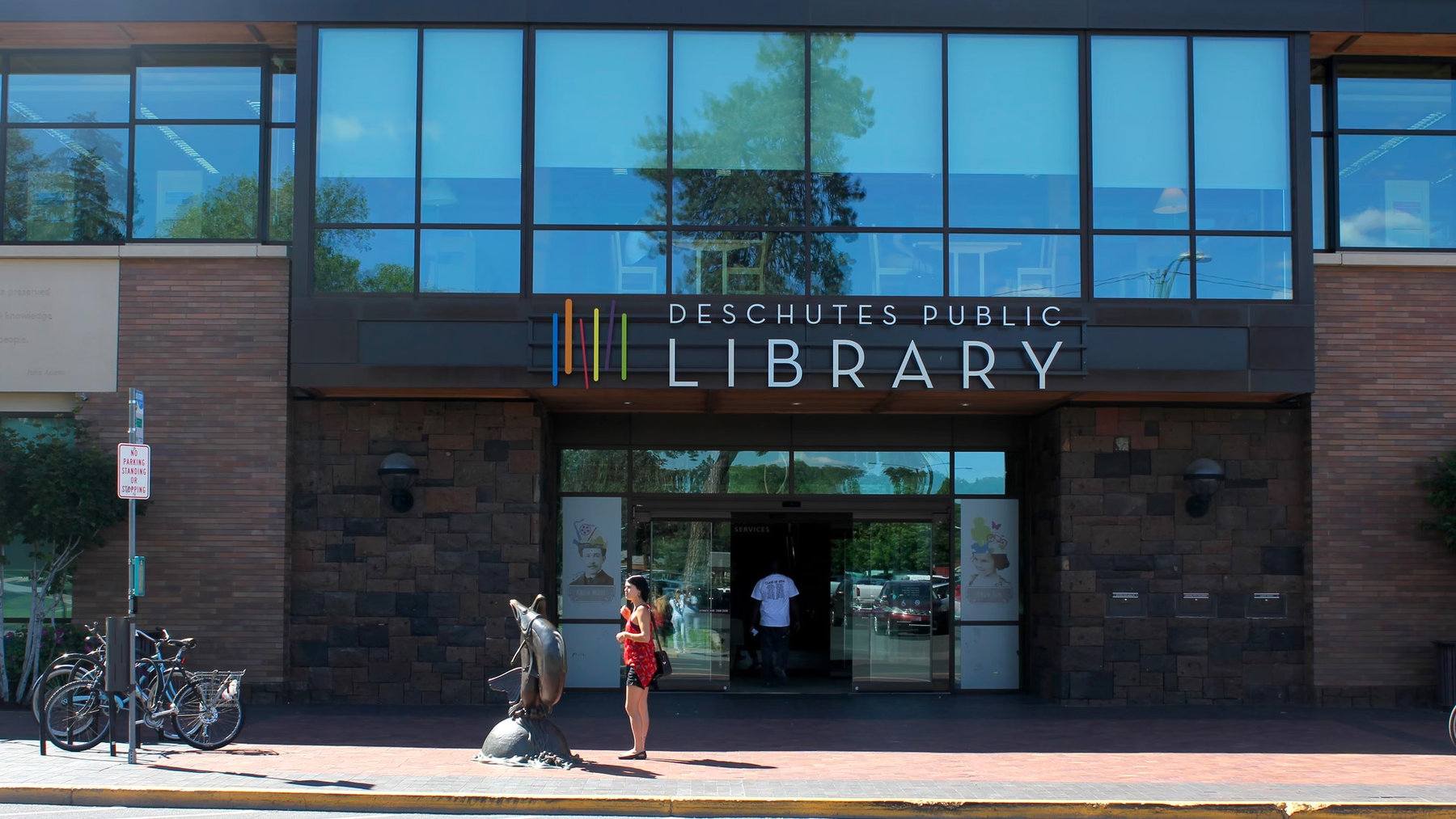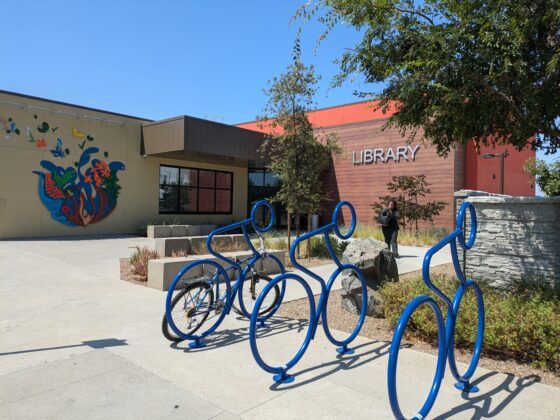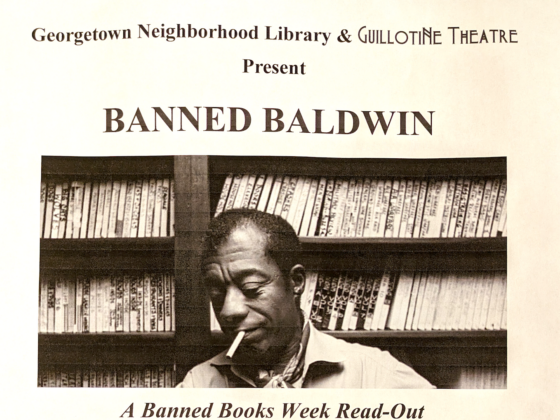In 2010, the administrators of the Deschutes Public Library system, in the beautiful high desert region of central Oregon, had a great idea. As part of their extensive research about their patrons’ library use and needs, they would also film some Q & A sessions with community residents about the library. For Todd Dunkelberg, the director of the six-branch Deschutes (sounds like de-shoots) libraries, the results were a wake-up call about the library’s visibility and familiarity. “People felt guilty about not knowing about their library,” he told me.
After visiting a multitude of libraries around the country during our last few years on the road with our American Futures project, I wasn’t so surprised to hear that another fabulous library had been a pretty well-kept secret. From Maine to California, I have heard story after story about efforts to bring town residents up to speed on libraries’ evolving and complex mission to serve the people.

Beyond the traditional marketing of public-service announcements, newspaper inserts, or direct mail, libraries have gotten creative. Library staff in Winters, California, and Columbus, Ohio, took to the streets, shops, and parks looking for moms with new babies to entice them with welcome boxes of books and library cards to the family-friendly library. In Ferguson, Missouri, after the unrest that led to closing schools, the libraries stayed open long hours to offer the children a safe and interesting place to be, as well as their own personal library cards.

Dunkelberg and Deschutes came up with a creative strategy of their own to introduce themselves to the people: They would rename their staff “community librarians” and encourage them to carry the message of the resource- and activity-rich library to civic organizations.
At first, Dunkelberg said, the somewhat puzzled reaction from the groups they went to visit was, “Why are you here?” But a few years later, after listening, learning, and sharing stories, people see the librarians coming and ask them, “How can we work with you?” By now, library staff is represented in more than 60 community groups from the Chamber of Commerce to the City Club, the Homeless Leadership Coalition, and Bend 2030, a planning group, and so many more.
So, what is going on at the Deschutes libraries? You can start with a list that now seems familiar to me from offerings at the busiest, most energized libraries elsewhere: art exhibits, book clubs, author readings, computer classes. Also: service programs on topics like car-seat safety, self-defense, everything about fire; and offerings for teens in STEAM (science, technology, engineering, arts, math) programs. The downtown branch of the system also has taken the first step into the “Maker Movement,” the term for the current trend across the country describing people making everything from humble hobbyist stuff to tech-sophisticated products enabled by equipment like 3-D printers. Every month the Bend library’s downtown branch has Maker Monday meetings. The July meeting featured a local maker movement leader introducing digital multimeters (DMM), a common piece of test equipment used in the electronics industry, and the August meeting is about how to make drinking glasses from wine bottles.
Sometimes, libraries are fixing old problems, rather than creating new offerings. They often answer vexing problems with surprisingly simple, yet effective answers. For example, in Columbus, Ohio, school kids were misbehaving on school buses. The library, which worked closely with the schools, offered to put boxes of books at the front of each bus for kids to grab during the ride home. Voila! The kids were hooked and down went the trouble incidents. The Deschutes libraries came up with a number of such answers to their own particular problems.
For the older folks in assisted living, who are often uncomfortable in the presence of lots of squirmy toddlers or fidgety teenagers, the library offers an exclusive hour before the normal opening times, to enjoy the library in peace.
Some older school-age kids who can’t yet drive, and may be too far away to bike or walk, can’t get to the library on their own. Instead, the library comes to them. Kids can request books, which are then delivered to their schools.

For the littlest readers, librarians used to hand out little toys as freebies in their summer-reading programs until they frequently, and sadly, found them discarded on the floor. Then they thought, “We’re a library! Let’s give them a book.” The switch was gratifying, reports Dunkelberg, who sometimes “works the desk” in the children’s section, just to keep in touch. He said that the kids love the books, and that the books are especially meaningful to the kids who don’t have books at home.
For the preschoolers, the main library in Bend recently designed a big play space. “Instead of preaching” about the importance of good play, Dunkelberg said, “we would show how it’s done.” The result is a bright, airy, sprawling space, with areas for different age-groups. The day I visited, as if on cue, one toddler took off after a bigger girl, who was “selling pizza” in a mock store-front. This was the best fake pizza I have seen; you could actually slice through the Velcro-ed pieces with a roller and present them to the buyer.

Making a big playspace eats into the traditional shelf space. Dunkelberg echoes other librarians I have heard when he says that he thinks of the library space as real estate. The real estate solution in Bend: go through the library holdings, then identify and take away the non-movers. Ruthless, but reasonable. I asked about the non-movers in his collection, and he said it was currently nonfiction for older kids; a response, he guessed, to a shift toward online research for that cohort.
You can see some of the upbeat attitude (and views of the new playspace) of the Deschutes libraries in this video:
During the latest economic downturn, the library saw an uptick in library use. Checkout numbers went up. Use of services like job-search help went up. Seizing an opportunity to expand by meeting new needs of the community, Dunkelberg explained why the downturn as a good time to make new partnerships. For example, sometimes the library had the space or the computers to offer while partner organizations had the expertise or the manpower.
Today, the library system has about 20 formal partnerships (and countless informal ones) to serve people with a vast variety of needs. These include partnerships with the AARP to help with tax assistance, with the Foundation Center for helping nonprofits seeking funding, and with Goodwill to teach résumé writing classes.
The library also has a social worker doing her grad school internship at the library. Partly she helps educate the staff on the variety of resources available to help them do their jobs better. When I asked what kind of help the library patrons are seeking these days, Dunkelberg told me that lots of people are trying to research how to meet their house and rental payments. “You’d never know it from just looking at the people that they need this kind of help,” he said, “It’s not obvious. “

The Deschutes formula for library success is clear: know your users; partner with the community; identify the needs; offer solutions to problems (even before the become problems); and act with enthusiasm. Besides, of course, being attentive to your books.




